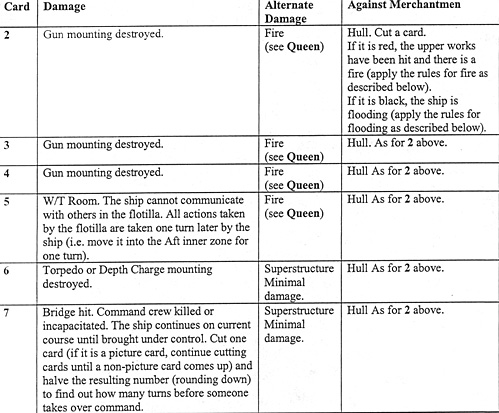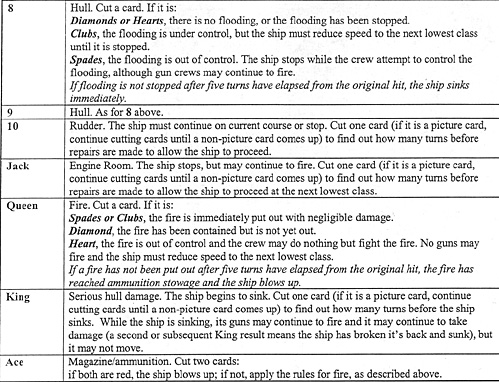 In 1997, I suggested to Kenn and Graham that we should put together a participation game that we could take to shows, partly to publicise the association and partly for a bit of fun. Kenn agreed and we quickly assembled the models and board for a quick and dirty MTB wargame, where the participants all played MTB or MGB commanders and the Germans were ‘automated’ (although in practice that automation turned out to be a bit basic).
In 1997, I suggested to Kenn and Graham that we should put together a participation game that we could take to shows, partly to publicise the association and partly for a bit of fun. Kenn agreed and we quickly assembled the models and board for a quick and dirty MTB wargame, where the participants all played MTB or MGB commanders and the Germans were ‘automated’ (although in practice that automation turned out to be a bit basic).
We took the game to the Harrogate wargames show that year. Graham had come up with the idea of having certificates for successful MTB/MGB commanders – those who either sank their foes, or at least lasted the game. Kenn spent most of that show trying and failing to earn a certificate, on one occasion managing to sink in the final turn! [My selective memory does not recall this incident. Landlubber Kenn]
The game had several further outings, to Leeds and Sheffield, but it was only really Kenn and Graham (and, as often as I could manage, me) who took it out and ran it and, with other things claiming all our time, it became more difficult to get together and run it.
 The rules that follow are the ones we used for the game. I can’t claim any credit for the authorship of these rules, as they are mostly drawn from various sources over the years. The damage rules originated from a wargaming pamphlet which was given away in either Battle or Military Modelling sometime in the mid-1970’s, when I first started wargaming and were part of a set of Dreadnought wargaming rules. The ‘spiders web’ playing surface comes from theoretical exercises at the Royal Navy staff college (although it probably doesn’t originate there) - a similar use of the spiders web can be found in the solo boardgame ‘Patton’s Best’ from Victory Games.
The rules that follow are the ones we used for the game. I can’t claim any credit for the authorship of these rules, as they are mostly drawn from various sources over the years. The damage rules originated from a wargaming pamphlet which was given away in either Battle or Military Modelling sometime in the mid-1970’s, when I first started wargaming and were part of a set of Dreadnought wargaming rules. The ‘spiders web’ playing surface comes from theoretical exercises at the Royal Navy staff college (although it probably doesn’t originate there) - a similar use of the spiders web can be found in the solo boardgame ‘Patton’s Best’ from Victory Games.
The rules are not designed to be completely realistic, but to give a flavour of small-boat fighting in WWII and to give a fast and exciting game. To that end, I have generalised the attributes and weaponry of the very large variety of small fast attack boats, MGBs, MTBs and the assorted other craft who fought during WWII and made the small number of craft detailed below. If you are interested in the subject, it should be a simple matter to make a much enlarged list of ships.
Models are available from Skytrex, where we got ours, but you can get cardboard counters (along with a perfectly adequate set of multiplayer rules) in Tabletop Games’ folio game, MTB! Alternatively, half an hour with some clipart, a computer and a colour printer should give you a reasonable sized force.
1. Playing Surface
The playing surface consists of three rings, one within another. The innermost ring must be large enough to hold the models and has no markings inside it. The outer two rings are subdivided into eight equal-sized areas each, radiating out from the centre to form a ‘spider’s web’ pattern.
These subdivisions are used to determine the ships facing and the spotting areas from that. They correspond to (clockwise from the ship’s bow): forward, port bow, port beam, port quarter, aft, starboard quarter, starboard beam, starboard bow. Some weapons can only fire into certain arcs, as indicated on the ships list (see Forces Involved, below).
2. Time and Distances
The game takes a maximum of ten turns, or until all the friendly vessels (i.e. those in the central ring) are destroyed. Each turn represents a variable, but short, amount of time in which each vessel can manouever and fire once.
The three ‘rings’ on the playing surface represent stylised range bands with the centre ring being close enough to be in formation, the inner ring being near range (or visible range for night actions) and the outer ring being far range (or beyond visible range for night actions).
3. Forces Involved

 Speeds are measured in four speed classes, ranging from A (the fastest) to D (the slowest), with an additional unspecified band for stopped. These speed ratings are used to determine movement as described in the following table:
Speeds are measured in four speed classes, ranging from A (the fastest) to D (the slowest), with an additional unspecified band for stopped. These speed ratings are used to determine movement as described in the following table:
The rating in the Centre Ring column is the maximum number of ‘quadrants’ a ship in the centre ring can change it’s facing by in one game turn. Note that ships can only turn in one direction in each game turn.
The rating in the Inner Ring and Outer Ring columns is the minimum number of game turns that a ship can spend in that ring before moving out of it.
The rating in the Drifting/Stopped column is the number of ‘quadrants’ that the drifting or stopped ship moves relative to the speed of the vessels in the centre ring.
4. Turn Sequence
The game lasts for a maximum of ten turns, or until all combatants are sunk/driven off. The turn sequence is:
- 1. All vessels who can move, do so.
2. All vessels who can fire, do so.
3. Damage is resolved for each vessel hit.
4. Continuing damage (i.e. fire and flooding) is resolved for those vessels that have continuing damage.
5. All vessels which have sunk are removed.
The turn sequence is an abstract representation of the ebb and flow of small boat actions. Although firing would be taking place while the vessels were moving - particularly the dropping of depth charges (pity the stupid bugger who drops depth charges at the end of his move!), representing that on the table-top would add a level of complexity which would interfere with the ‘feel’ of the game.
5. Firing
 Guns are classed according to the following table:
Guns are classed according to the following table:
The number of cards drawn when the gun fires is modified by the aspect and speed of the target ship, as follows:
If the target ship is at 90/270 degrees to the firing ship:
- -4 cards for every speed band the target is faster than the firer
+2 card for every speed band the firer is faster than the target
If the target ship is traveling in the same direction as the firing ship:
- -2 cards for every speed band the target is faster than the firer
+1 card for every speed band the firer is faster than the target
If the target ship is traveling in the opposite direction to the firing ship:
- -6 cards for every speed band the target is faster than the firer
Torpedoes do 16 cards worth of damage, modified by the aspect of the target ship as follows:
- -0 cards if the target ship is at 90/270 degrees to the torpedo (running across the torpedoes’ path).
-8 cards if the target ship is nose or stern on to the torpedo.
Depth charges do 36 cards worth of damage to the target ship, modified by the speed of the target ship as follows:
- Speed A: -30
Speed B: -20
Speed C: -15
Speed D: -5
Stopped: -0
Depth charges also do 36 cards worth of damage to the launching ship (determine damage after you have completed determining damage to the target ship), modified by the speed of the launching ship as follows:
- Speed A: -36
Speed B: -30
Speed C: -20
Speed D: -10
Stopped: -0
Bombs do 36 cards worth of damage to the target ship, modified by the speed of the target ship as follows* :
- Speed A: -30
Speed B: -20
Speed C: -15
Speed D: -5
Stopped: -0
Rockets do 6 cards per rocket worth of damage to the target ship, modified by the speed of the target ship as follows* :
- Speed A: -20
Speed B: -15
Speed C: -10
Speed D: -5
Stopped: -0
* Halve these figures if the aircraft is attacking from the target ship’s bow or stern.
6. Damage
A pack of ordinary playing cards (with Jokers removed) is used to determine damage. The deck is shuffled and cards are drawn to determine any damage suffered by a single vessel. The deck is not shuffled again until you move on to determine damage to another vessel, or all 52 cards are used and there are still hits to be determined (poor buggers!).
When determining damage, one card is drawn for each round on target (determined in Firing, above):
- For gunfire (from air and surface targets) and bombs, only Clubs are hits. Spades are close misses, or hits which cause no damage (denting gun shields or carrying away guardrails, aerials and other impedimenta). Red cards are near misses (no damage caused).
- For torpedoes and depth charges, only Clubs with a value of 8 or higher hit. All others are near misses (no damage caused).
For gunfire against air targets, only Clubs are hits, but the damage table below is not used. One or two hits damage the aircraft and causes it to abort its attack (it may start a new attack run next turn). Three or Four hits damage the aircraft and cause it to break off its attack and return to base. Five hits destroy the aircraft.
The effect of the damage against ships is determined by the value of the Club card drawn, according to the following table. Where there is more than one column, the following column is used:
- the first column is used by warships, unless there are no more targets of the indicated type (e.g. all gun mountings are destroyed),
- the second column is used if the first column cannot be used
- the third column is used by Merchantmen and other unarmed shipping.


MTB: Motor Torpedo Boat Scenarios
Back to Table of Contents -- Lone Warrior # 145
Back to Lone Warrior List of Issues
Back to MagWeb Magazine List
© Copyright 2004 by Solo Wargamers Association.
This article appears in MagWeb (Magazine Web) on the Internet World Wide Web.
Other articles from military history and related magazines are available at http://www.magweb.com
